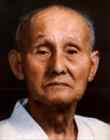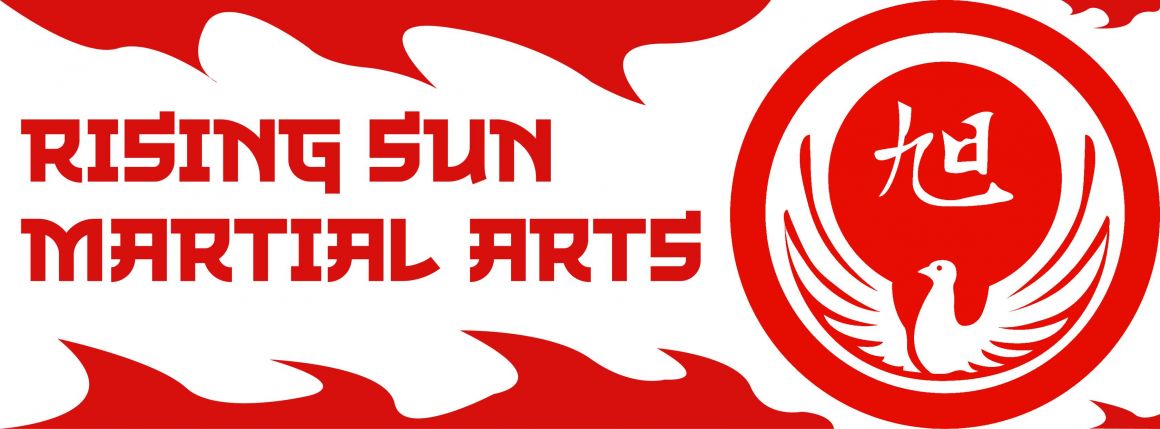History
A brief history of Wado Ryu and its creator Hironori Otsuka

Hironori Otsuka
Founder of Wado Ryu
(June 1, 1892 - January 29, 1982)
|
Jiro (Hironori 2nd) Otsuka
2nd Headmaster of Wado Ryu
(February 24, 1934 - June 26, 2015)
|
Kazutaka (Hironori 3rd) Otsuka
3rd Headmaster of Wado Ryu
(March 14, 1965 - Present)
Our Lineage:
Hironori Otsuka
(Founder of Wado-ryu)
|
Toru Takamizawa
(Temple Karate, Birmingham)
|
Clayton Murrain
(Temple Karate, Birmingham)
(E.W.S.K.A - Chief Instructor)
|
Patrick Scantlebury
(Temple Karate, Birmingham)
(N.A.S.S.K.C - Chief Instructor)
|
M. T. Middleton
(N.A.S.S.K.C- Club Instructor)
(Rising Sun Martial Arts / K.K.I.D.S - Chief Instructor)
History Of Hironori Otsuka
1st June 1892, Hironori Otsuka was born.
He was born in Shimodate City, Ibaragi, Japan, the first son of Dr. Tokuiuro Otsuka, a Doctor of Medicine.
In 1897, when he was five years old, Otsuka began to study Koryu Jujitsu under his mother’s uncle Chojiro Ebashi, a samurai and the official martial arts instructor of the Tsuchiura Clan.
On the 1st April 1897 Otsuka started school and studied Shindo Yoshin Ryu Jujitsu, under the supervision of Shinzaburo Nakayama Sensei, a third generation Menkyo Kaidan (Highest Grade) of this style of Jujitsu, whereas most schools at that time stressed throwing or grappling techniques, this school stressed atemi (striking and kicking techniques). Otsuka continued his studies of Shindo Yoshin Ryu Jujitsu whilst at Waseda University from 1910 to 1917 reading commerce.
Otsuka also studied different styles of Jujitsu and some Kenjutsu. Whilst studying Jujitsu,
Otsuka learned a great deal about the body's "vital points" both for attacking and healing purposes, he also studied the art of "bone setting".
Otsuka was awarded the highest degree of Shindo Yoshin Ryu Jujitsu on 1st June 1920, which allowed him to succeed his master's position as a fourth generation Menkyo Kaidan.
Gichin Funakoshi Sensei was invited by the Japanese Education Department to demonstrate his style of Okinawan Karate (To de) at the 1922 Sports Festival in Tokyo. For the first-time Otsuka was to encounter Karate. Kano Sensei, a renowned Martial Arts (Judo) Instructor, accepted that the spirit behind karate was the same as Japanese Martial Arts, which served to promote its message and style. Otsuka was impressed with this newly promoted Martial Art. Funakoshi Sensei was "impressed" by Otsuka's enthusiasm and determination to understand Karate and agreed to teach him all he knew about Karate. Within a year Otsuka Sensei had studied all the Katas that Funakoshi had brought from Okinawa.
Otsuka in his search for a deeper understanding of Karate began to practice Kata with Mabuni Sensei, the founder of Shito-Ryu Karate and Choki Motobu.
His prowess in the Martial Arts had led him to be the Chief Instructor of 'Nakayama-ha' (Nakayama Branch) Shindo Yoshin Ryu Jujitsu and an assistant instructor at Funakoshi Sensei's dojo. By the year 1929 Otsuka was a registered member of the Japan Martial Arts Federation.
Now, Okinawan Karate only concentrated upon Kata, Otsuka thought that the full spirit of Budo, which concentrates both upon defence and attack, was missing. Otsuka Sensei had been developing Yakusoko Kumite to compensate for the lack of attacking techniques. He thought there was a need for a more fluid type of Karate and decided to leave Funakoshi Sensei to concentrate on developing his own style of Karate, "Wado".
On February 28th 1934 Jiro Otsuka was born. (Jiro Otsuka also studied Aikido, Iaido, Judo, Kendo, Kempo & Shindo Yoshin Ryu Jujitsu.)
Wado-Ryu Karate was also "born" and officially recognised to be an independent style the same Year. originally it was registered as 'Shinshu Wado Ryu Karate Kempo Jujitsu' the following year it was re-registered as simply 'Wado Ryu'. It is often called 'Wado Ryu Karate' or 'Wado Ryu Kempo Jujitsu' highlighting its hybrid heritage.
In 1935 Karate received a further promotion upon Kano Sensei's recommendation to be accepted as a Martial Art, but at first only as an extension of Judo by the Japan Martial Arts Federation.
Otsuka Sensei's personalised style of Karate was officially registered in 1938 after he was awarded the rank of "Renshi-go".
Otsuka presented a magnificent demonstration of "Wado" Karate for the Japan Martial Arts Federation.
Otsuka introduced different kinds of body shifting techniques, a more upright stance for mobility, and reliance on evasion and counter techniques. He also introduced throws and joint locks into the repertoire.
As described by Masafumi Shiomitsu, 8th degree, Wado Ryu may be considered a synthesis of four elements: Shurite Karate Do, Shindo Yoshin Ryu Jujitsu, Toda Ryu Kodachi, and Yagyu Ryu Kenjutsu. To the linear techniques of Shurite are added the body movement principles and grappling techniques of Shindo Yoshin Ryu, the nagasu techniques of Toda Ryu (which is a system of fighting with short sword against longer weapons), and the movement and flow of Yagyu Ryu style of swordsmanship. From these sources are defined several principles which are fundamental to Wado Ryu.
The Japan Martial Arts Federation asked all the different styles of Karate to register their names. Otsuka registered the name of "Wado-Ryu". Other styles to register included Shotokan Ryu, Goju Ryu and Shito-Ryu.
In 1942 he was awarded the title of Kyoshi-go, also in 1942 Tatsuo Suzuki began training in Wado-Ryu Karate.
In 1943 Jiro Otsuka began Martial Arts. He started Kendo under the strict instruction of army officer, Miyata Sensei.
In 1944 Otsuka Sensei was appointed Japans Chief Karate instructor.
in 1945 Jiro Otsuka began to receive expert instruction from his father.
In 1947 Teruo Kono began Karate but did not start training with Otsuka Sensei until 1951.
in 1955 the first all Japan Wado-Ryu Karate championships were held.
In 1963 a three-man team left Japan to conquer America and Europe. The team was composed of Mr. Arakawa, Mr Takashima and Mr. T. Suzuki. Wado-Ryu Karate became recognised worldwide.
In 1965 Kazutaka Otsuka was born, son of Jiro Otsuka, grandson of Hironori Otsuka. (Kazutaka Otsuka also studied Aikido, Iaido, Judo, Kendo & Wrestling)
In 1966 Otsuka Sensei was awarded the title "Kun Goto Suokuo Kyoku jujitsu Shou" by the late Emperor Horohito. It was presented by the Emperor for his dedication to the introduction and teaching of karate.
Also in 1966 Toru Takamizawa came over to England to assist Tatsuo Suzuki, Toru Takamizawa eventually broke away from the other Japanese Wado Ryu Sensei to found and run the highly successful Temple Karate Centre in Birmingham and headed one the first ground breaking large multi style Karate groups in the UK.
By the early 1970s karate had become truly established worldwide.
Otsuka Sensei in 1972 was historically awarded with an honour never bestowed upon any Karate master, the president of the International Martial Arts Federation, a member of the Japanese royal family, presented Otsuka with the title of "Meijin" - the first excellent Marital Artist in Karate (10th Dan) it was the greatest title possible and bestowed upon him.
he finally abdicated his possession as Grand Master of Wado-Ryu Karate on the 20th November 1981 and nominated his son Hironori (Jiro) Otsuka 2nd as his successor.
Hironori Otsuka died on 29th January 1982.
Jiro (Hironori 2nd) Otsuka died on June 26 2015.
Jiro's son, Kazutaka (Hironori 3rd) Otsuka, became the 3rd and current Headmaster of Wado Ryu.
Our History
Clayton Murrain studied under Toru Takamizawa at the Temple Karate Centre before establishing the E.W.S.K.A (English Wado Ryu Sport Karate Association).
Both Patrick Scantlebury, N.A.S.S.K.C (Northern All Styles Sport Karate Club) and Ivan Riley, N.S.T.K (National Sport & Traditional Karate) studied at the Temple Karate Centre before Founding associations affiliated to the E.W.S.K.A.
Master Middleton studied under Patrick Scantlbury N.A.S.S.K.C before leaving to create his own association K.K.I.D.S (Karate Kickboxing Intense Defence System) in 2005, later renaming it Rising Sun Martial Arts in 2016.
Master Trevor Middleton - Karate Profile
Master Middleton first studied Martial Arts with Bob Sykes, then studied karate and kickboxing with the N.A.S.S.K..C before leaving to found his own association K.K.I.D.S (Karate Kickboxing Intense Defence System) in 2005, later renaming it Rising Sun Martial Arts in 2016. Master Trevor Middleton has been training in martial arts for over 40 years with over 20 years’ experience in teaching to a variety of students. Trevor would like to share all his experience with you, to give you the confidence to be able to protect yourselves at the same time as keeping fit. Trevor prides himself in the achievements that his students have made in both national and international competitions. Trevor has also achieved varied medals and trophies including 4 times world medal holder, American national champion and in 2007 he received a world’s martial arts award in Atlantic City.Trevor’s statement is:“My endeavour to explore different martial arts and what they can achieve has given me the widest and deepest knowledge which I yearn to share with others. As I learn more, the more I want to teach people with the same enthusiasm”.
Clayton Murrain - Karate Profile (From EWSKA Website)
Clayton Murrain started Karate in 1969 at the Temple Karate Centre in Birmingham with his friend Clive Henry. They joined the Temple as it was one of the largest clubs in Birmingham at the time. It started with Clayton training at Digbeth Civic Hall (another venue for the Temple) on a Sunday morning for 2 Hours with Ken Dicks. His instructors at The Temple Karate were Toru Takamizawa, Sakagami, Ken Dicks and John Hopkins.
Clayton began to compete when he reached Green Belt.
He won numerous individual and team Championships with the Temple.
The Temple Karate were one of the most successful Karate Teams of the 1970's and during this Golden Era of Karate the team consisted of Clayton Murrain, Eddie Cox, Fred Rose, Eugene Codrington, Joe Kissane, Josh Johnson and Al Knight. Still to this day the Temple is held in high regard by all those who are in the know about Karate, especially those who practice Wado-ryu Style Karate.
Clayton started teaching Karate in The Temple about 1975 and he has been teaching Karate fo over 40 Years. He went into teaching Karate after retiring from a successful career in fighting and decided to go into coaching to pass on his knowledge, collected as a member of the Temple Karate Club. On retirement Clayton took over the management and running of Temple Karate Squad which was very successful featuring many World Champions and European Champions in Semi-contact and Kickboxing.
Clayton has been very successful at producing many National and International Champions in Traditional Wado-ryu, Sport Karate and Kickboxing.
In 1980 Clayton decided to create the new association.
Since then he has go on to achieve 8th Dan
Patrick Scantlebury - Karate Profile (From NASSKC Website)
In the early seventies, when Britain was first held in the grip of Martial Arts "fever", the Temple Karate Centre in Birmingham was a national shrine for Martial Artists and produced many superior instructors, a number of whom have help World, European and British titles, gaining International recognition.
Of those instructors, one who made a name for himself as both a fighter and instructor was Patrick Scantlebury, British and European Sports Karate Champion. Patrick began training in 1971 at the age of 12, training at least four times a week, usually after school, entering local and national competitions and achieving a great measure of success. One of his greatest achievements was winning British and European titles. Though Patrick maintains that perhaps his fondest memory was when he awarded his 1st Dan black belt. Since then he has go on to achieve 7th Dan
In 1981 after narrowly missing the chance of the World title, Patrick moved to Sheffield to promote sports Karate, which at that time was in its infancy in the country as a new development in the Martial Arts World.
